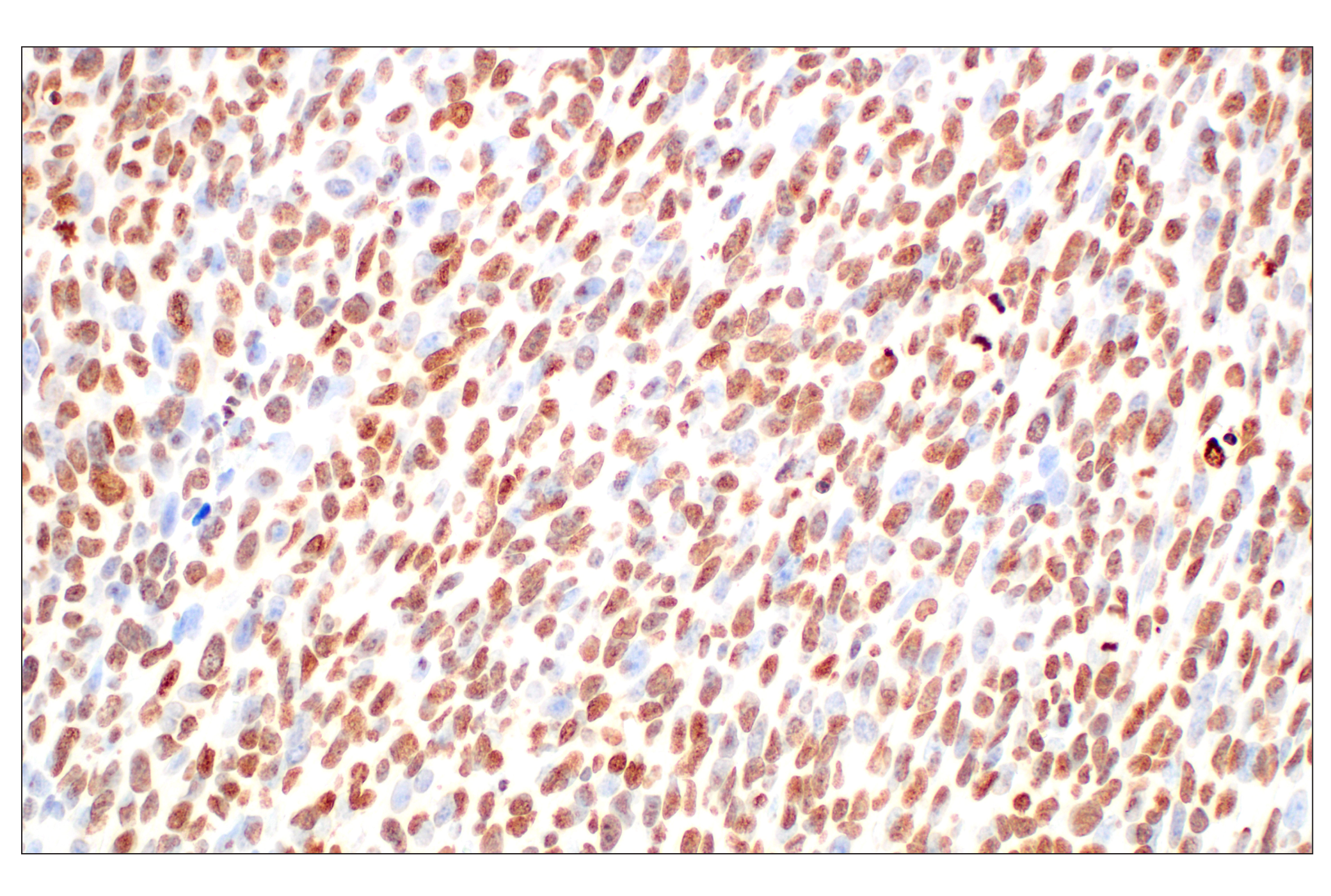


1/25
产品介绍
产品信息
抗原名称
Methyl-Histone H3

来源纯化
Monoclonal methyl-histone H3 Lys9 antibodies are produced by immunizing rabbits with synthetic peptides corresponding to the amino terminus of histone H3 in which Lys9 is mono-, di-, or tri-methylated. The control histone H3 monoclonal antibody is produced by immunizing animals with a synthetic peptide corresponding to the carboxy terminus of the human histone H3 protein.

简单描述
Antibody Sampler Kit for studying H3 (Lys9) trimethylate/H3 (Lys9) methylate/H3/H3 (Lys9) dimethylate in the research area.

研究领域
癌症,发育生物学与干细胞研究,表观遗传学,神经科学,

应用
目标/特异性
Specificity/Sensitivity
Each antibody in the Methyl-Histone H3 (Lys9) Antibody Sampler Kit detects endogenous levels of its target protein. Tri-Methyl-Histone H3 (Lys9) (D4W1U) Rabbit mAb detects endogenous levels of histone H3 when tri-methylated on Lys9. This antibody shows some cross-reactivity with histone H3 that is di-methylated on Lys9, but does not cross-react with non-methylated or mono-methylated histone H3 Lys9. This antibody does not detect tri-methyl histone H3 Lys9 when the adjacent Ser10 residue is phosphorylated during mitosis. Di-Methyl-Histone H3 (Lys9) (D85B4) XP® Rabbit mAb detects endogenous levels of histone H3 only when di-methylated on Lys9. The antibody does not cross-react with non-methylated, mono-methylated or tri-methylated Histone H3 Lys9. Mono-Methyl-Histone H3 (Lys9) (D1P5R) Rabbit mAb recognizes endogenous levels of histone H3 protein only when mono-methylated at Lys9. This antibody does not cross-react with non-methylated, di-methylated, or tri-methylated Lys9. Histone H3 (D1H2) XP® Rabbit mAb detects endogenous levels of total Histone H3 protein, including isoforms H3.1, H3.2, H3.3, and the variant histone CENP-A. This antibody does not cross-react with other core histones.

背景
背景
核小体由四个核心组蛋白(H2A、H2B、H3 和 H4)组成,是染色质的主要组成部分。最初被认为可作为 DNA 包装的静态支架的组蛋白现在已被证明是动态蛋白,可进行多种类型的翻译后修饰,包括乙酰化、磷酸化、甲基化和泛素化 (1)。组蛋白甲基化是形成基因组的活跃和非活跃区域的主要决定因素,并且在发育期间基因组的正确编程过程中发挥关键作用 (2,3)。组蛋白 H3 (Arg2, 17, 26) 和 H4 (Arg3) 的精氨酸甲基化可促进转录激活,并由蛋白精氨酸甲基转移酶 (PRMTs) 家族介导,该家族包括辅助激活因子 PRMT1 和 CARM1 (PRMT4) (4)。与此相反,已确定更多样化的组蛋白赖氨酸甲基转移酶,除了其中某个外其余的都含有一个保守催化 SET 结构域,该结构域最初在果蝇 Su(var)3-9、zeste 增强子和 Trithorax 蛋白中得以确认。赖氨酸甲基化主要发生在组蛋白 H3 (Lys4 位点, 9, 27, 36, 79) 和 H4 (Lys20 位点) 中,并已确定与转录激活和沉默有关 (4)。这些赖氨酸残基的甲基化可协调染色质修饰酶的募集,这些酶含有甲基赖氨酸结合模块,例如克罗莫结构域 (HP1, PRC1)、PHD fingers (BPTF, ING2)、tudor 结构域 (53BP1) 和 WD-40 结构域 (WDR5) (5-8)。PADI4、LSD1、JMJD1、JMJD2 和 JHDM1 等组蛋白脱甲基酶的发现表明:甲基化是可逆的表观遗传标记物 (9)。组蛋白 H3 Lys9 甲基化通常与组成型异染色质的转录抑制有关。三甲基化和二甲基化组蛋白 H3 Lys9 的水平在转录抑制的兼性异染色质区域中较高,这类区域包括转座因子和着丝粒区域。单甲基化组蛋白 H3 Lys9 在活性和失活基因体中被发现,并且更为广泛地分散。
Peterson, C.L. and Laniel, M.A. (2004) Curr Biol 14, R546-51.
Kubicek, S. et al. (2006) Ernst Schering Res Found Workshop, 1-27.
Lin, W. and Dent, S.Y. (2006) Curr Opin Genet Dev 16, 137-42.
Lee, D.Y. et al. (2005) Endocr Rev 26, 147-70.
Daniel, J.A. et al. (2005) Cell Cycle 4, 919-26.
Shi, X. et al. (2006) Nature 442, 96-9.
Wysocka, J. et al. (2006) Nature 442, 86-90.
Wysocka, J. et al. (2005) Cell 121, 859-72.
Trojer, P. and Reinberg, D. (2006) Cell 125, 213-7.

研究领域
癌症,发育生物学与干细胞研究,表观遗传学,神经科学,
数据库链接
Entrez-Gene ID
8350

UniProt ID
P68431

参考图片
声明 :本官网所有报价均为常温或者蓝冰运输价格,如有产品需要干冰运输,需另外加收干冰运输费。




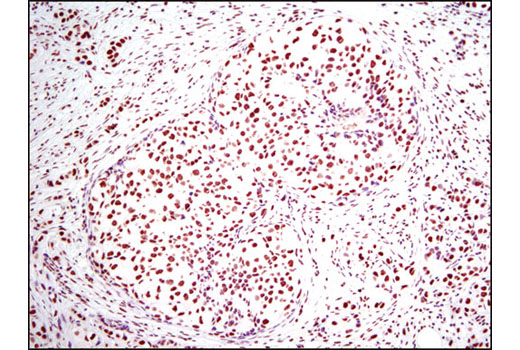

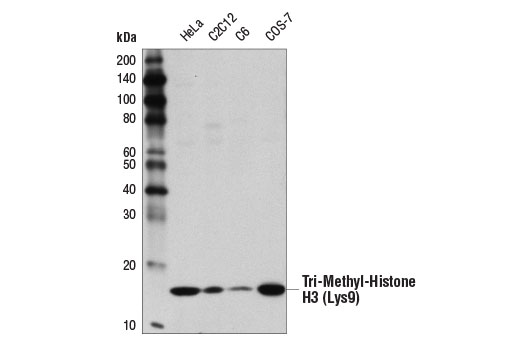
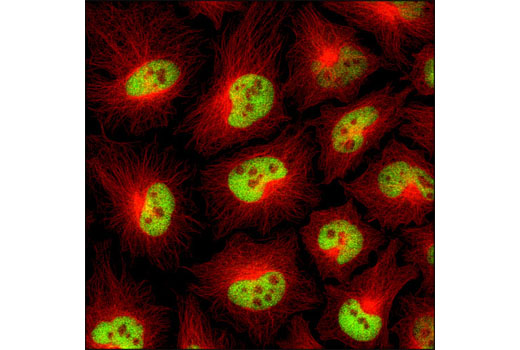
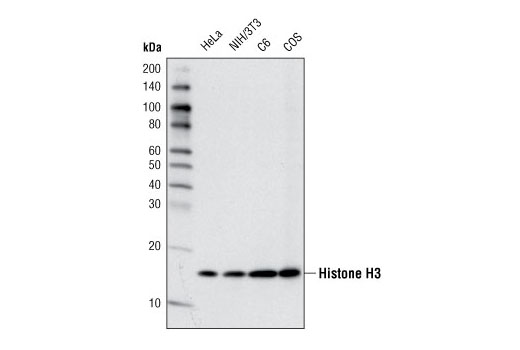

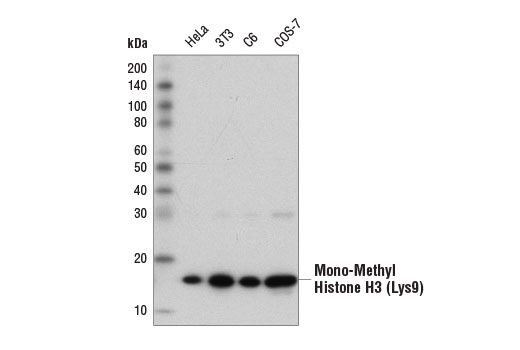
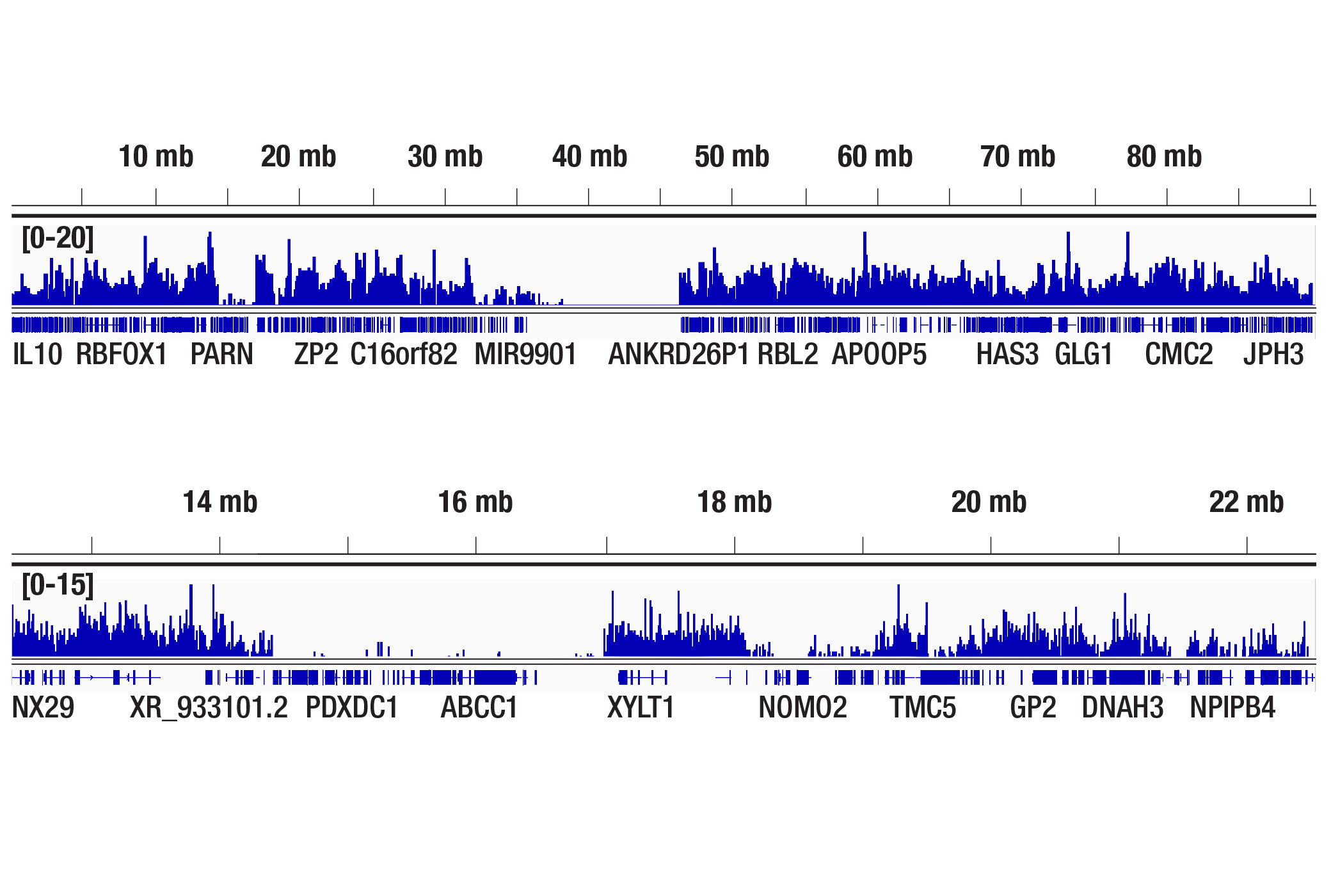


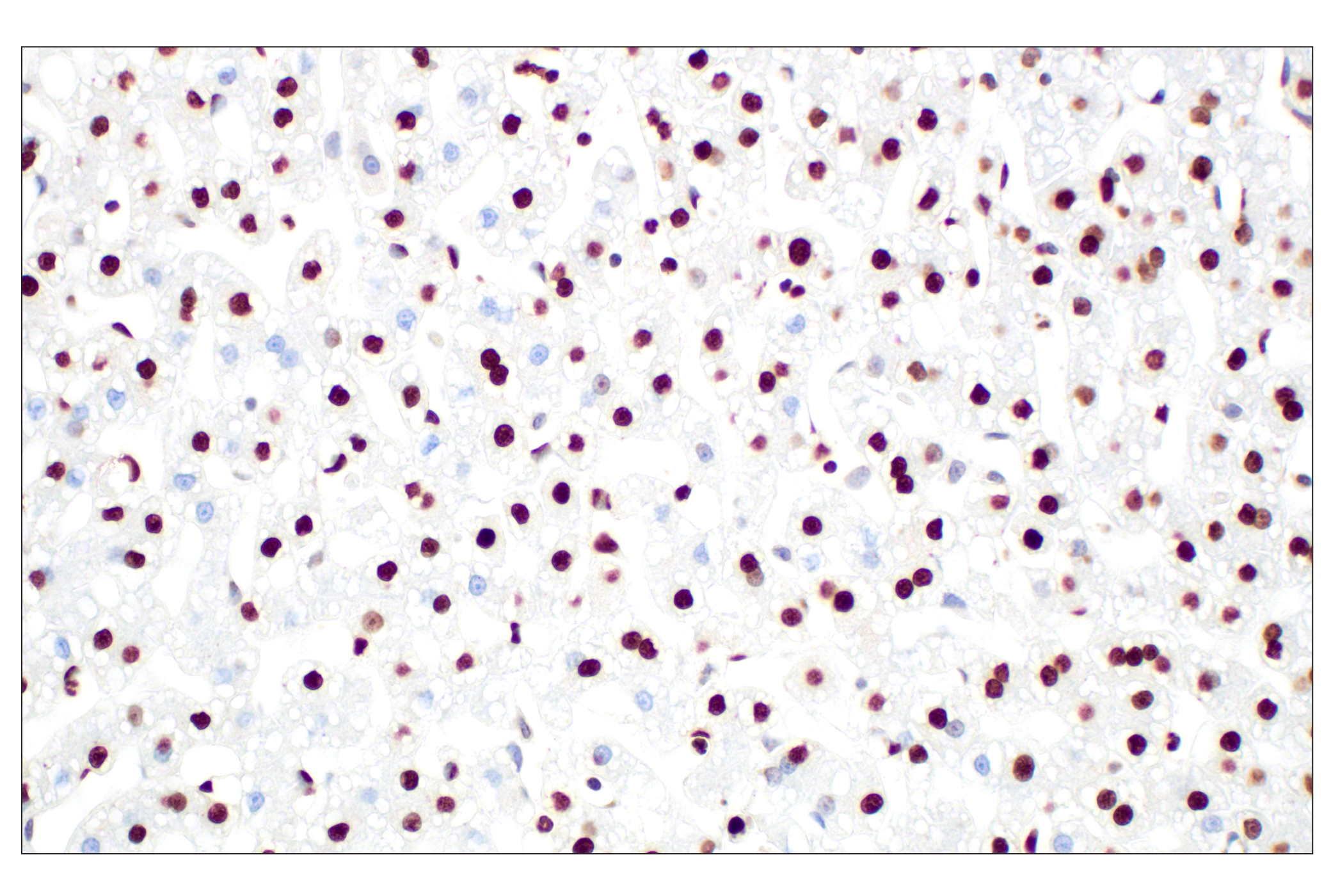

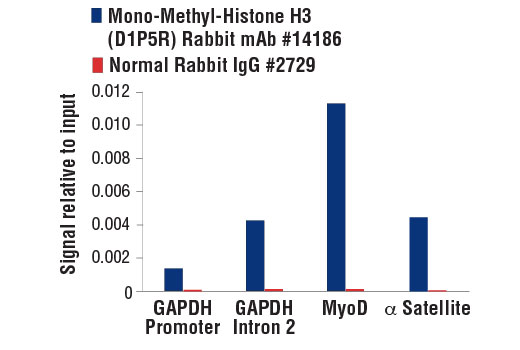
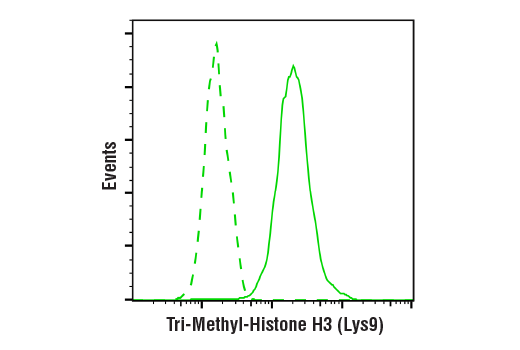
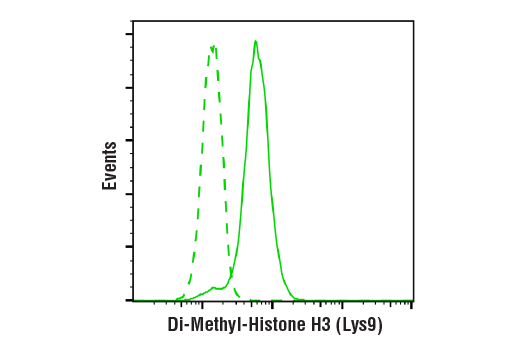

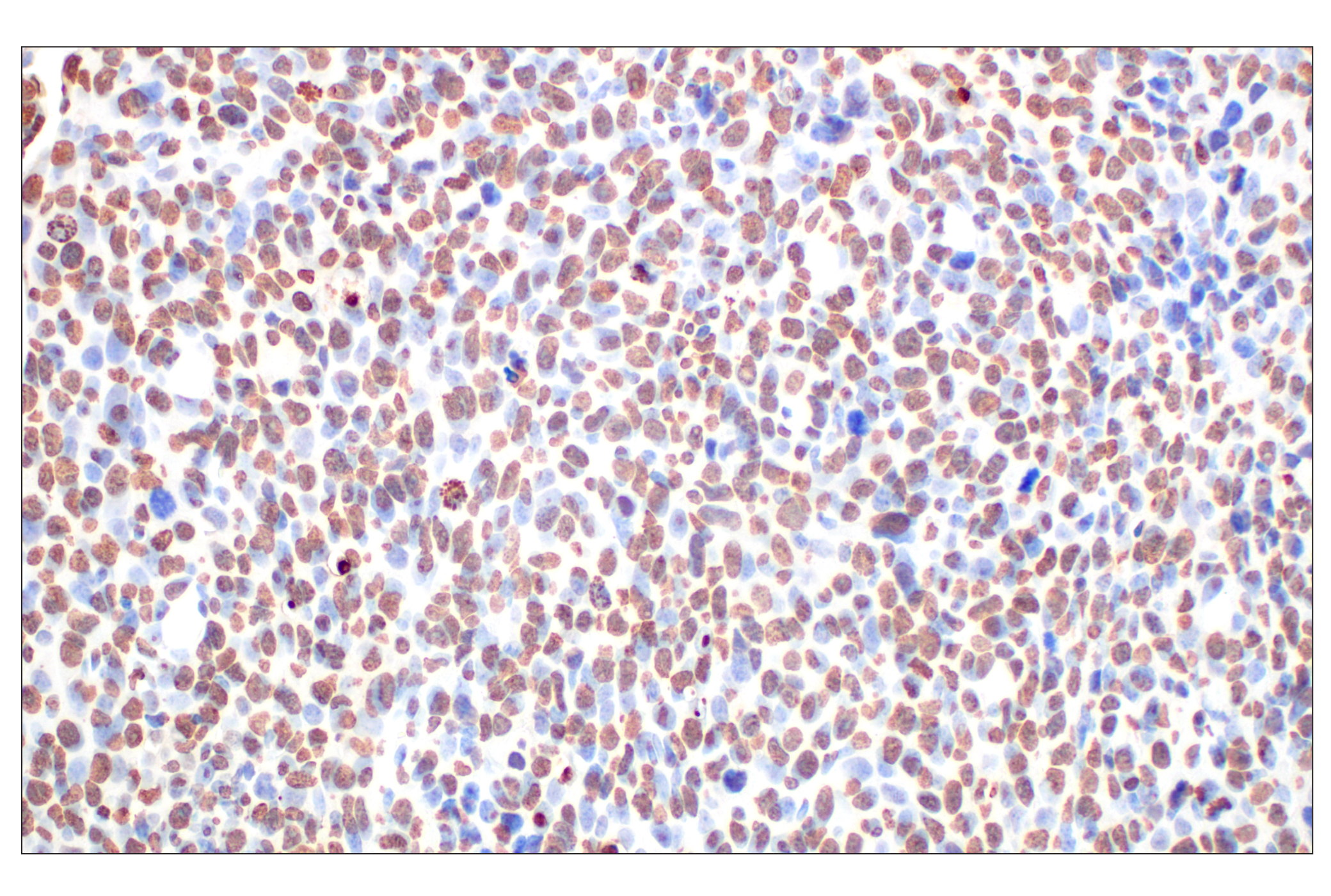
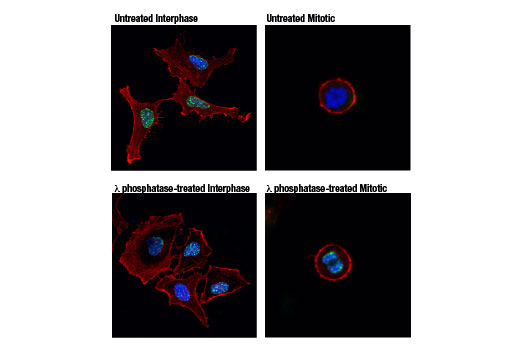
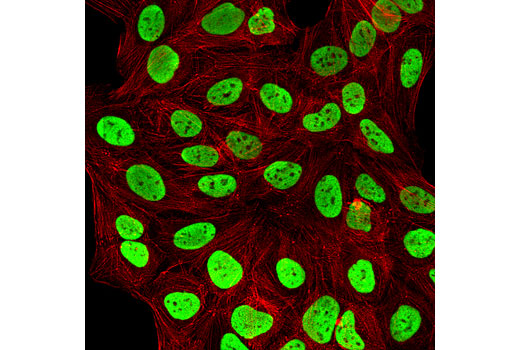
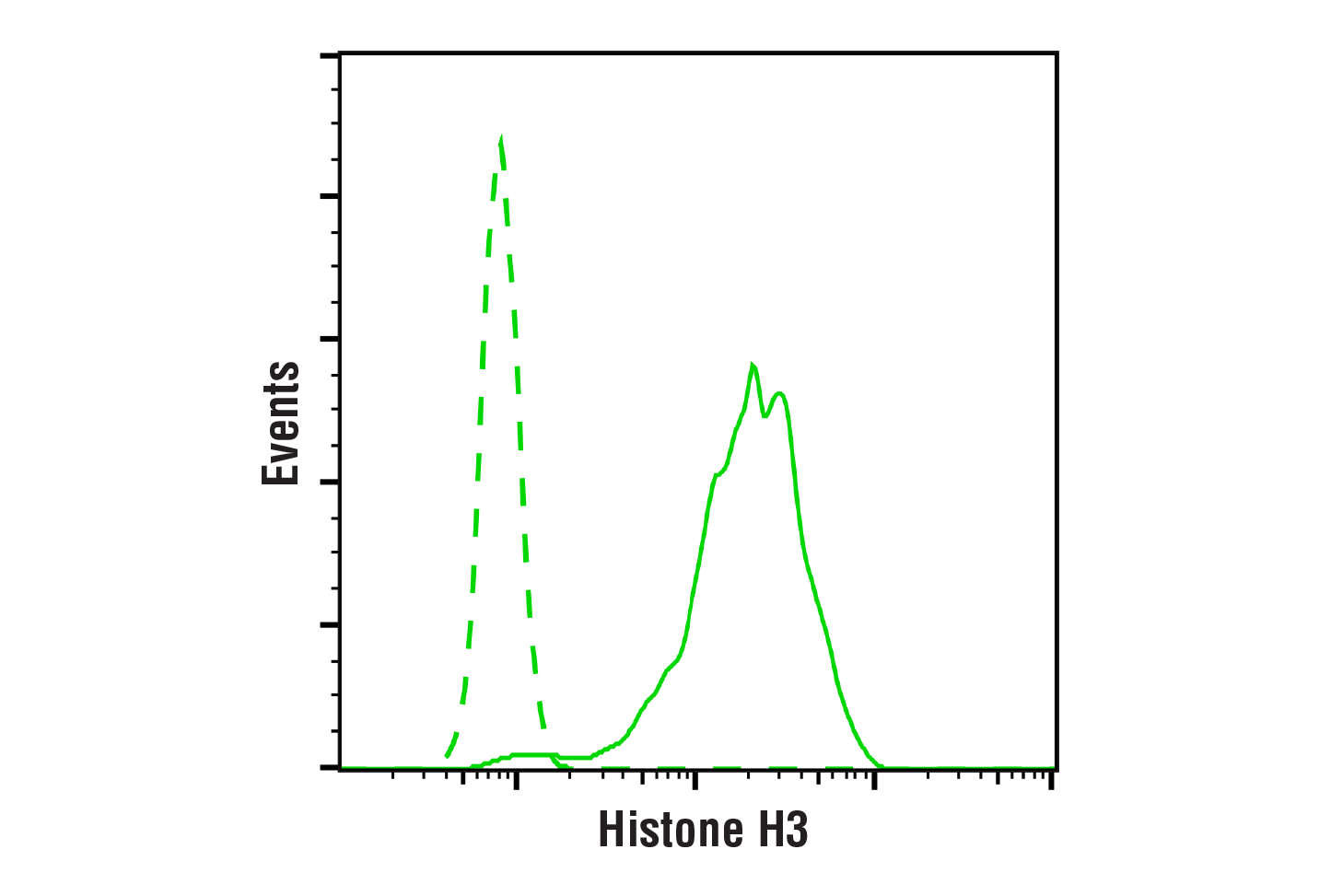

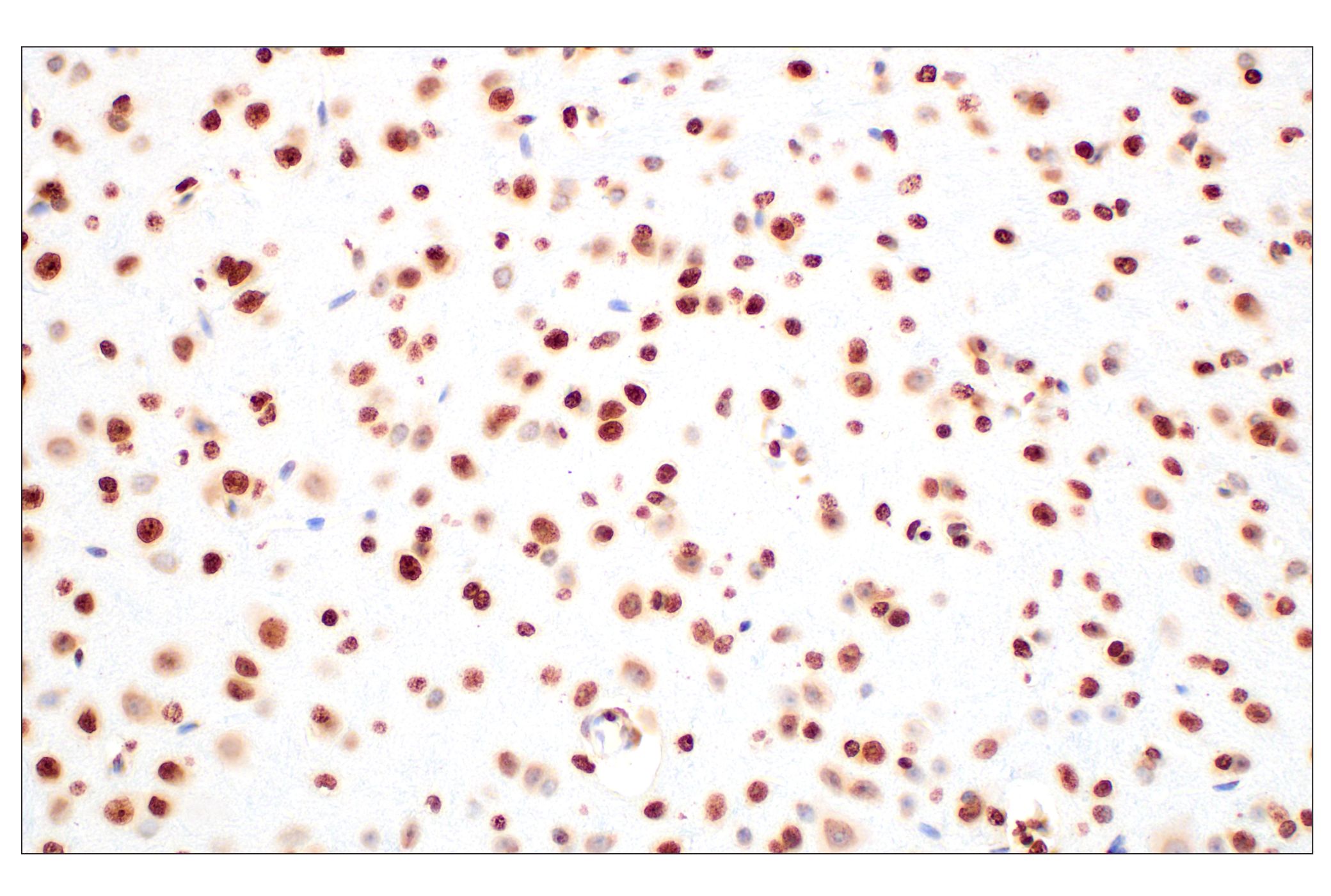
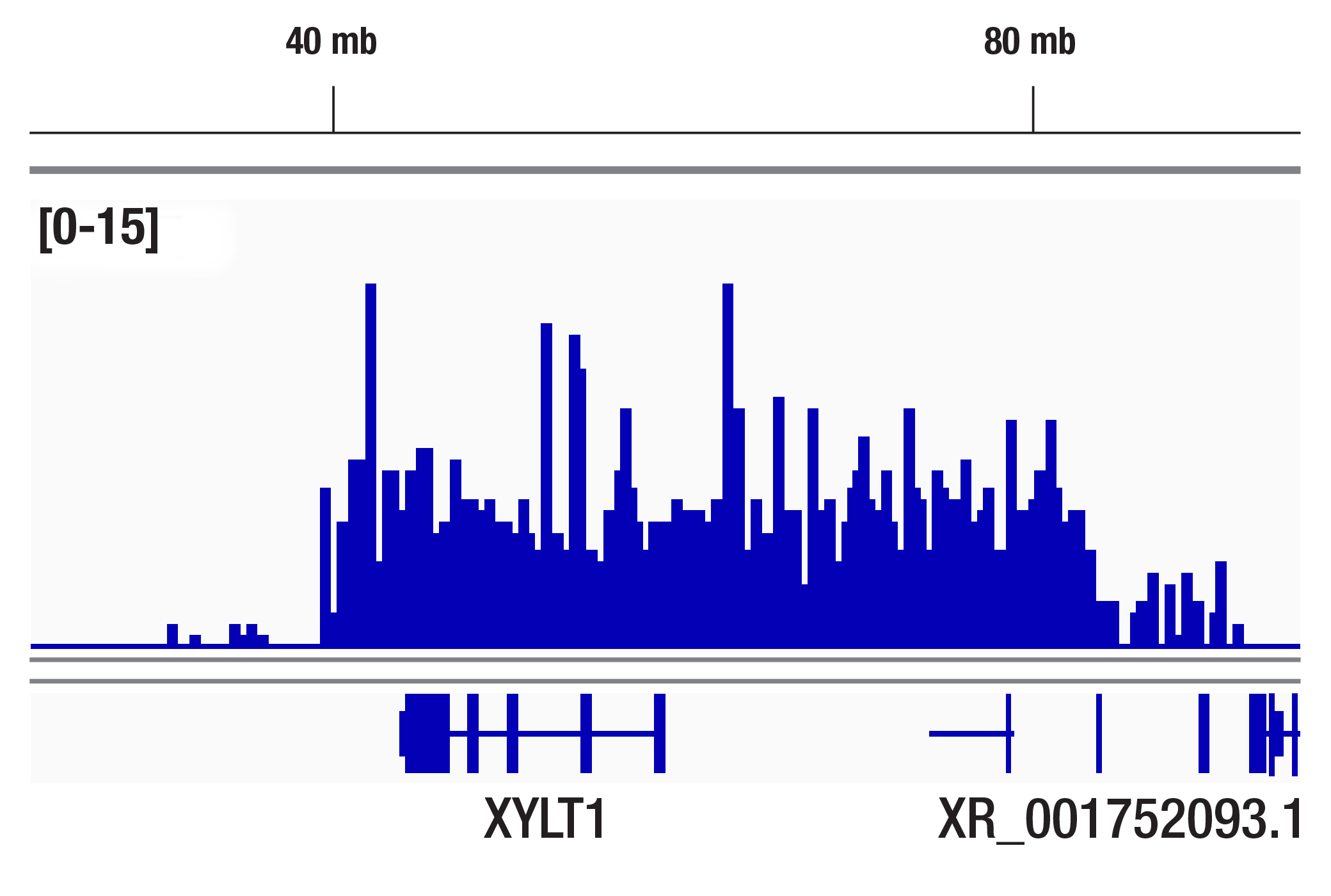



 用小程序,查商品更便捷
用小程序,查商品更便捷







 危险品化学品经营许可证(不带存储) 许可证编号:沪(杨)应急管危经许[2022]202944(QY)
危险品化学品经营许可证(不带存储) 许可证编号:沪(杨)应急管危经许[2022]202944(QY)  营业执照(三证合一)
营业执照(三证合一)